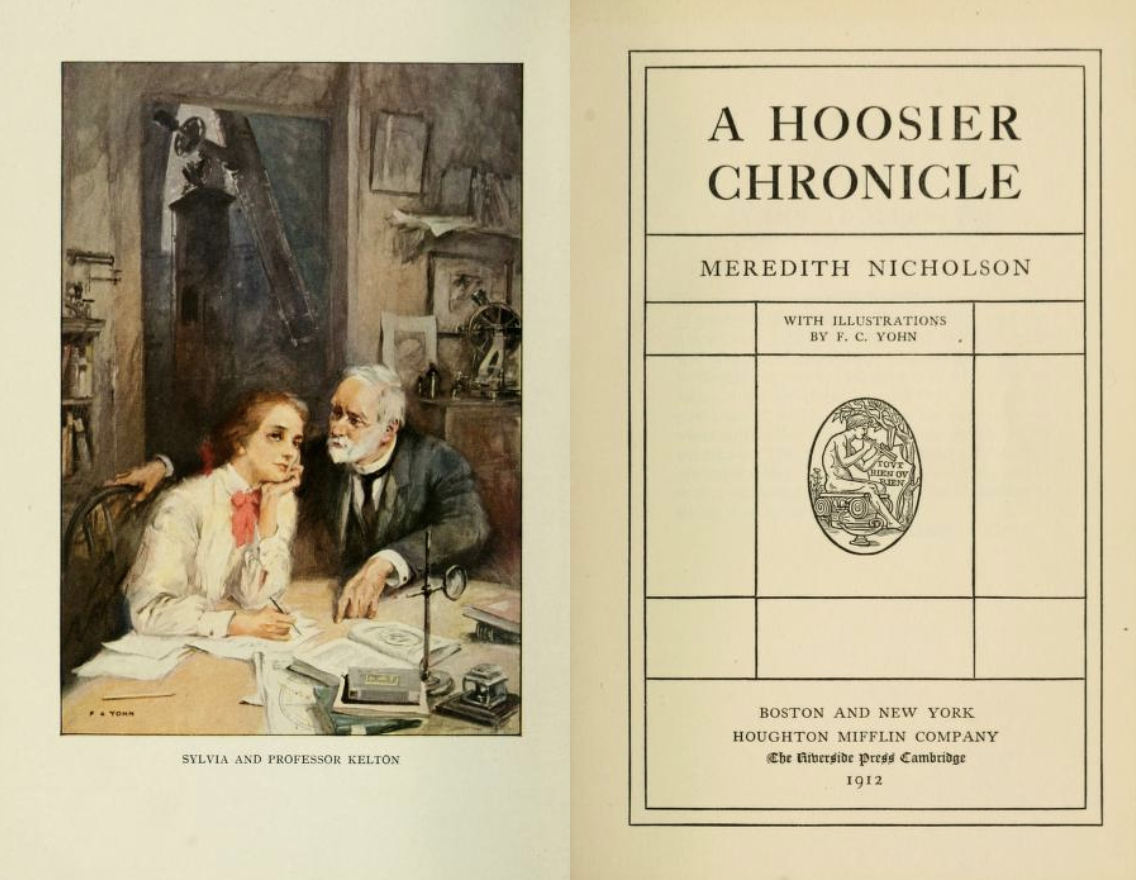(New York, 1912) was written by Indianapolis popular author . It is a powerful novel of politics and society set in central Indiana, particularly Indianapolis, in the early 20th century. Published during the height of Nicholson’s reputation, it marked his most ambitious effort at a serious, factually based analysis of politics, the role of legislative bosses, and the efficacy of progressive reforms then being promoted within the Hoosier state.

Nicholson drew some of the characters from life, particularly the feisty older woman, Aunt Sally Owens, and outdoorsman-minister John Ware, and the dramatic selection of a senator to fill a vacancy was based upon events during Governor Thomas Marshall’s administration. Nicholson always considered this novel, his ninth, as his best.
The story chronicles the life of a young woman from Madison (Wabash) College and her mysterious background and relations with the two most powerful political figures in the state following her arrival in the state capital. Brimming with insights regarding Indiana’s political and cultural history, and a few of its actual people, it reveals not only a great deal of Nicholson’s own political philosophy and his support of women’s rights but also much about life in the capital city at the dawn of the automobile age.
Nicholson described the physical layout of the city at the end of the 19th century, its major thoroughfares and fine homes, the pleasures and pastimes of the people, and various historical curiosities. Quite consciously accepting a responsibility to posterity to record things about the city accurately in his more serious literary works, he noted, for example, that cattle were still being driven “through” Washington Street en route to the railroad yards until 1888, when “the cobbles yielded to asphalt.” He recorded that, “what later historians may be interested to learn from these pages,” the station wagon, drawn by a single horse, was for years “the commonest vehicle” of Indianapolis, a byproduct of the financial panics of 1873, 1884, and 1893. The city’s resultant label as a “one-horse town” persisted into the 20th century.

Help improve this entry
Contribute information, offer corrections, suggest images.
You can also recommend new entries related to this topic.